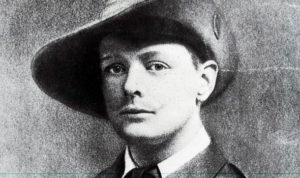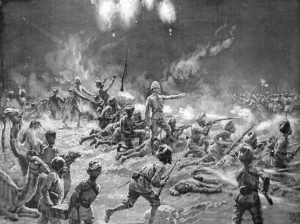StoryElement
Sidney Street

Winston Churchill, Parliament Square, London © Sue Lowry & Magellan PR
January 1, 1970
In January 1911 Churchill provoked further controversy as a result of his decision to personally oversee the police’s attempts to capture a group of Latvian anarchists, led by ‘Peter the Painter’, who were holed up in a house in Sidney Street in London’s East End, with the house eventually catching fire. Churchill’s conspicuous presence at the ‘Sidney Street Siege’ (he’d gone along to see what was happening, ‘driven’, as he said later, ‘by a strong sense of curiosity’) and his approval of the police’s decision to let the house burn down was captured on newsreel film. He was criticised for potentially putting himself in the line of fire.
In the House of Commons, Balfour enquired after the event: ‘I understand what the photographer was doing, but what was the right honourable gentleman doing?’ (Churchill and Gilbert: 2.409).
For more detail on this ‘escapade’ of Churchill’s, see ‘The Siege of Sidney Street’ by Stanley Smith.
All these events ‘marked a turning point in Churchill’s relations with the Labour party and the trade unions. His record as a social reformer was eclipsed by his new reputation as a class warrior’ (Addison, Winston Churchill, 2007).
Subscribe
WANT MORE?
Get the Churchill Bulletin delivered to your inbox once a month.






